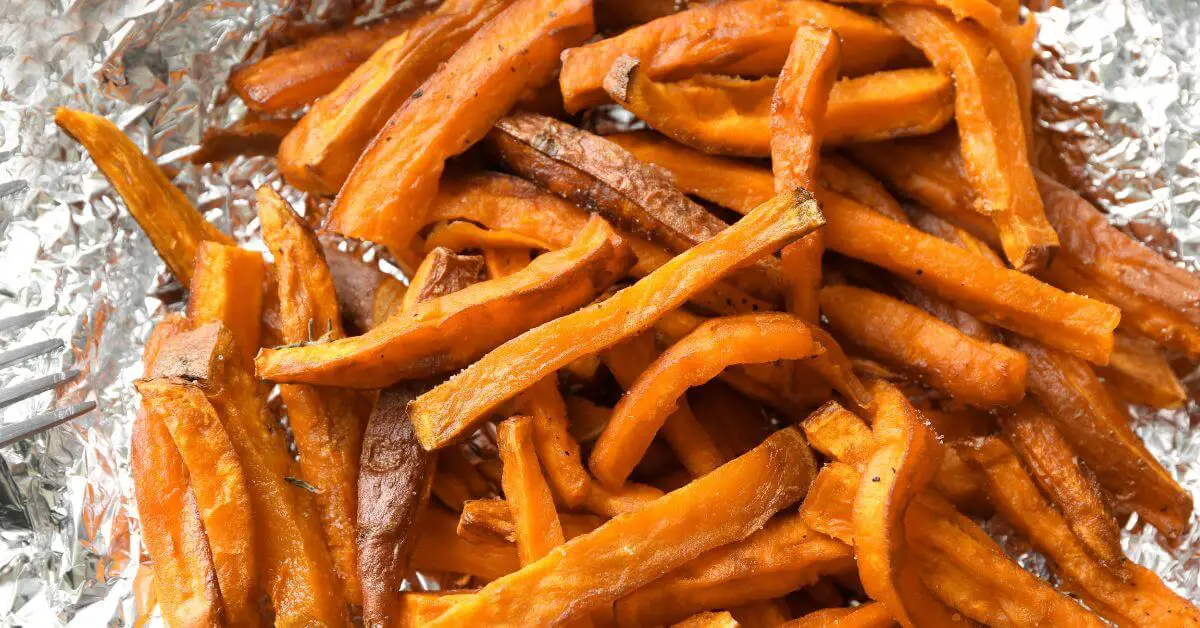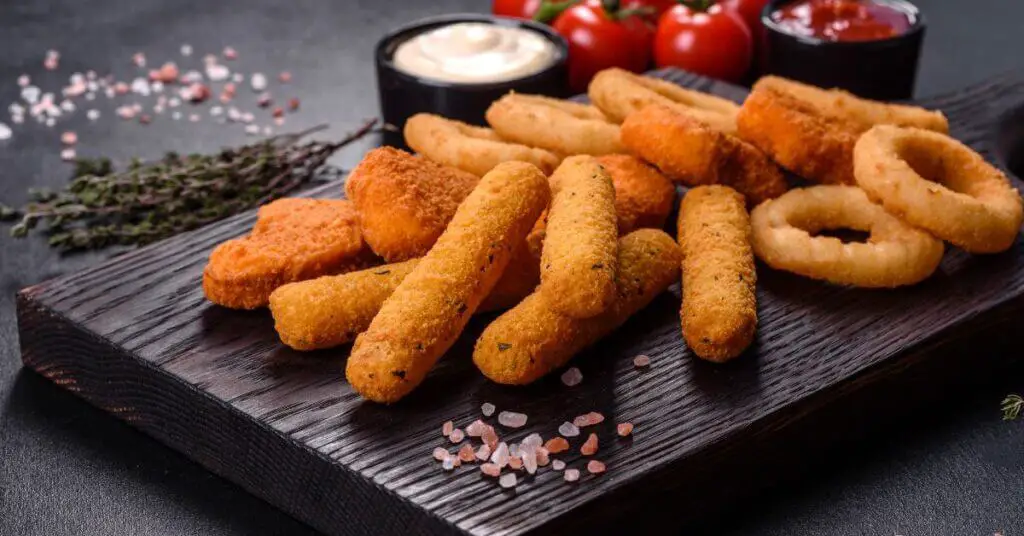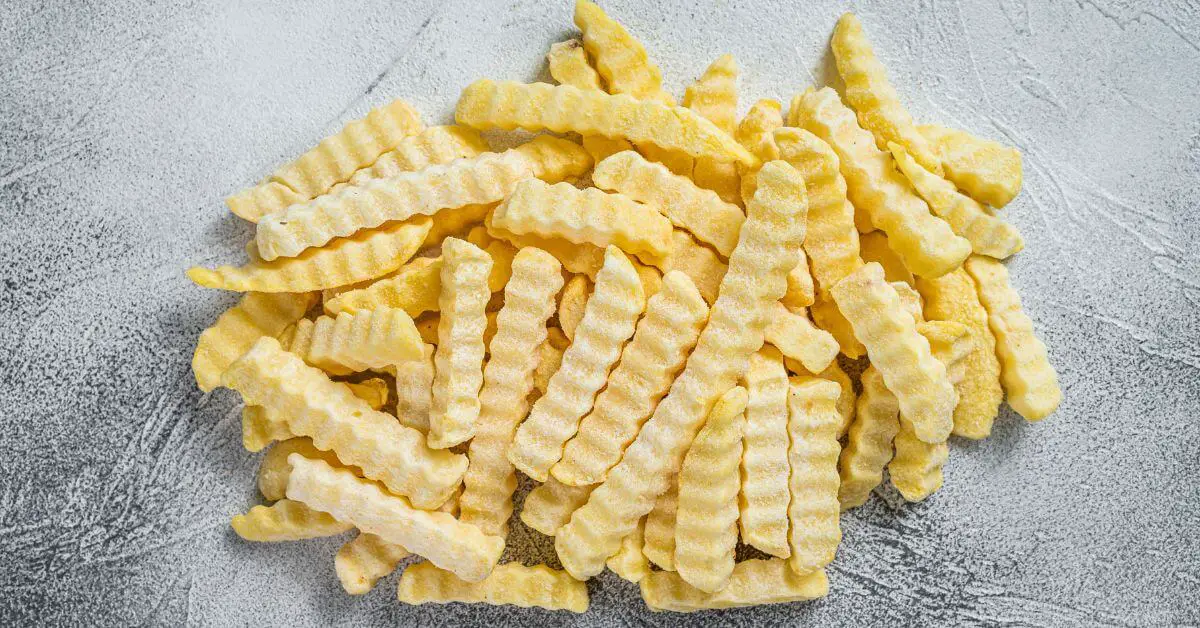Potato sticks, a quintessential snack loved by many, have a rich history that intertwines with the evolution of modern snacking habits. Originating as a simple, yet ingenious way to enjoy potatoes, these crispy, slender pieces have transformed into a global phenomenon, finding their place in kitchens and snack aisles around the world.
Overview of Their Popularity and Uses
Potato Sticks today, are not just confined to being a snack; they have found versatile uses in various culinary contexts. They are often used as a crunchy topping on dishes like casseroles and salads, adding texture and flavor. In some cultures, they are even incorporated into traditional dishes, showcasing their adaptability.
Their popularity extends beyond the kitchen. they are a staple in picnics, parties, and as a quick snack for people of all ages. Their appeal lies in their simplicity, the satisfying crunch, and the familiar, comforting taste of potatoes. In the realm of snack foods, they stand out for their unique form and texture, making them a perennial favorite.
Types of Potato Sticks
Potato sticks, a versatile and beloved snack, come in various forms and flavors. From commercially available brands to homemade recipes, there’s a wide range of options catering to different tastes and preferences. This diversity not only highlights the snack’s popularity but also its adaptability to different culinary cultures and tastes.
Commercially Available Brands
- French’s Potato Sticks: Known for their classic taste and crunch, French’s are a staple in the snack world. They are often recognized for their distinctive can packaging and have been a favorite for generations.
- Utz Potato Sticks: Utz offers a range of sticks known for their crispy texture and rich flavor. Packaged in convenient canisters, they are a popular choice for those seeking a crunchy, savory snack.
- Better Made Potato Sticks: A brand that prides itself on quality, Better Made’s are known for their freshness and flavorful taste. They offer a homestyle crunch that resonates with snack lovers.
Each of these brands has carved out a niche in the potato stick market, offering unique flavors and textures that cater to different consumer preferences.
Homemade Recipes
Homemade recipes are a delightful way to enjoy this snack, with the added benefit of customizing them to your taste. Here’s a basic recipe:
- Ingredients:
- 4 large potatoes, peeled
- 2 tablespoons olive oil
- 1 teaspoon paprika
- 1/2 teaspoon garlic powder
- Salt and pepper to taste
- Fresh herbs (like parsley or rosemary), finely chopped for garnish
- Directions:
- Preheat your oven to 400°F (200°C). Line a baking sheet with parchment paper.
- Cut the potatoes into thin sticks, approximately 1/4 inch thick.
- In a large bowl, toss the sticks with olive oil, paprika, garlic powder, salt, and pepper until evenly coated.
- Spread the sticks in a single layer on the prepared baking sheet.
- Bake for 25-30 minutes, or until golden brown and crispy, turning them halfway through the cooking time.
- Remove from the oven and sprinkle with fresh herbs for garnish.
- Serve hot as a snack or side dish.
-
- Prep Time: 15 minutes | Cooking Time: 30 minutes | Total Time: 45 minutes
- Kcal: 190 kcal per serving | Servings: 4 servings
This simple recipe can be modified with various seasonings and herbs to create different flavor profiles.
Variations in Flavors and Ingredients
Potato sticks are not just limited to the classic salted variety. There’s a wide array of flavors available, reflecting global culinary trends and preferences:
- Barbecue: A sweet and smoky twist to the classic potato stick.
- Sour Cream & Onion: Creamy and tangy, these are popular for their rich flavor.
- Cheese: Cheese-flavored potato sticks are a hit among those who enjoy a cheesy twist.
- Spicy Variants: For those who prefer a kick, spicy flavors like chili or jalapeño are available.
In addition to flavor variations, there are also ingredient modifications catering to health-conscious consumers:
- Baked Potato Sticks: A healthier alternative to the traditional fried version.
- Gluten-Free Options: Catering to dietary restrictions, some brands offer gluten-free potato sticks.
- Organic and Non-GMO Variants: These cater to consumers looking for natural and organic snack options.
The diversity in types, flavors, and ingredients of potato sticks showcases their universal appeal and adaptability. Whether you prefer the convenience of a store-bought snack or the personal touch of a homemade recipe, potato sticks offer something for everyone. In the following sections, we will delve into the nutritional profile of potato sticks and how they are made, further exploring this versatile snack.
Nutritional Profile
Potato sticks, like any snack food, have a specific nutritional profile that varies slightly based on the brand and preparation method. Understanding this profile is essential for those mindful of their dietary intake. We’ll look at the macronutrient breakdown, the micronutrients present, and compare them with other potato-based snacks.
Macronutrient Breakdown
- Carbohydrates: Potato sticks are primarily a source of carbohydrates since they are made from potatoes. The carbohydrate content mainly comprises starch, with a small amount of dietary fiber.
- Fats: Being a fried snack, potato sticks contain a significant amount of fats. The type of fat (saturated, unsaturated) largely depends on the oil used in the frying process. Baked versions tend to have lower fat content.
- Proteins: Potato sticks have minimal protein content. They are not a significant source of protein but may contain small amounts depending on the ingredients used.
Micronutrients Present
Potato sticks contain several micronutrients, although in varying amounts:
- Potassium: Potatoes are a natural source of potassium, and some of this nutrient is retained in potato sticks.
- Vitamin C: While fresh potatoes are a good source of vitamin C, the frying process significantly reduces its content in potato sticks.
- B Vitamins: Depending on the processing, some B vitamins may be present in small amounts.
For detailed nutritional information on potato sticks, including calorie count, visit Nutritionix.
Comparison with Other Potato-Based Snacks
Let’s see how this crunchy treat stands out among its counterparts.
Versus Chips
- Texture and Shape: These sticks offer a crunchier bite, a contrast to the lighter crunch of the round, flat chips.
- Flavor Retention: Their slender shape holds onto seasonings more effectively.
vs French Fries
- Cooking Style: Fries are generally thicker with a softer inside, while these sticks are uniformly crunchy.
- Serving Method: Fries often accompany meals, whereas these sticks are typically enjoyed as a snack or garnish.
Versus Mashed Potatoes
- Texture: The creamy texture of mashed potatoes contrasts with the crispy nature of these sticks.
- Usage: Mashed potatoes are a common meal side, while these sticks offer versatility in snacking and cooking.
vs Potato Wedges
- Size and Feel: Wedges are larger with a crispy outside and soft inside, unlike the uniform crunch of these sticks.
- Seasoning: Both can be seasoned in various ways, but these sticks often pack more intense flavors.
In summary, while all these treats come from the same root, they differ in texture, cooking methods, and roles in culinary experiences. These sticks, known for their unique crunch and intense flavor, provide a distinct experience.
Culinary Uses
These slender, crispy treats offer more than just a quick snack. They bring a unique texture and flavor to various dishes. Here’s how you can creatively use them in the kitchen.
As a Topping
- Enhancing Casseroles and Soups: Sprinkle them over casseroles or soups for an added crunch. Additionally, they can transform a simple dish into something more exciting.
- Revitalizing Salads: Toss them into salads for a contrasting texture. This not only adds crunch but also a new dimension to your salads.
In Breading
- Crunchy Coating for Meats: Use them as a coating for chicken or fish, offering a crispy alternative to breadcrumbs. This method not only enhances the texture but also infuses a unique flavor.
- Vegetarian Dishes: They make a great crunchy coating for fried vegetables or tofu, adding an interesting twist to vegetarian meals.
In Baking
- Savory Baked Goods: Mix them into the dough for muffins or bread for a subtle flavor and pleasant crunch. This addition not only enhances the texture but also adds a delightful flavor.
- Desserts with a Twist: Include them in desserts like chocolate bark or as a topping for ice cream for a sweet and salty flavor. Consequently, they can turn a simple dessert into a gourmet treat.
Tips for Cooking
- Keep Them Fresh: Store them in an airtight container to maintain their crunch. This step is crucial for ensuring they add the desired texture to your dishes.
- Balance the Flavors: Adjust other seasonings in your recipe, considering they are already seasoned. This approach ensures that the flavors in your dish are well-balanced.
- Flavor Experiments: Try different flavors to add a unique twist to your dishes. Furthermore, experimenting with flavors can lead to exciting new culinary discoveries.
- Timing is Key: Add them towards the end of cooking to prevent them from getting soggy. By doing so, you’ll preserve their crunchiness, enhancing the overall texture of the dish.
Incorporating these sticks into your cooking can elevate everyday dishes with an extra layer of texture and flavor. Whether used as a topping, a breading alternative, or a baking ingredient, they prove to be a versatile and delightful addition to various recipes. This versatility not only makes them a valuable ingredient in the kitchen but also a source of culinary inspiration. For ideas on incorporating potato sticks into various diets, see our guide on adapting recipes at RecipeCastle.
Health and Dietary Considerations

While sticks are a popular snack, it’s important to consider their health and dietary implications. This includes understanding their caloric content, suitability for various diets, and exploring healthier alternatives.
Caloric Content and Health Implications
- Caloric Density: Potato sticks are relatively high in calories, primarily due to their fat content from frying. A typical serving can be calorie-dense, making moderation key.
- Fat Content: The type of oil used in frying can impact the healthfulness of potato sticks. Saturated and trans fats, which are less healthy, can be a concern, especially in cheaper or lower-quality products.
- Salt Content: Many potato sticks are high in sodium, which can be a health concern for individuals with hypertension or heart disease.
- Impact on Health: Consuming high amounts of fried, salty snacks like potato sticks can contribute to various health issues, including weight gain, high blood pressure, and an increased risk of heart disease.
Suitability for Various Diets
- Gluten-Free: Many potato sticks are naturally gluten-free, as they are made from potatoes and oil. However, it’s important to check for cross-contamination in manufacturing if one is strictly avoiding gluten.
- Vegan: Traditional potato sticks are often vegan, as they contain no animal products. However, flavored varieties may contain non-vegan ingredients, so it’s essential to read labels.
- Low-Carb Diets: Potato sticks are high in carbohydrates and may not be suitable for low-carb diets like Keto or Atkins.
Healthy Alternatives to Traditional Potato Sticks
- Baked Sticks: Baking instead of frying can significantly reduce the fat content. Homemade baked sticks can be a healthier alternative.
- Air-Fried Sticks: Using an air fryer can also reduce the amount of oil needed, making a healthier version of this snack.
- Vegetable Sticks: For a low-calorie, nutrient-rich alternative, sticks made from vegetables like carrots, zucchini, or sweet potatoes can be a great option.
- Seasoning Alternatives: Using herbs and spices for flavoring instead of salt can help reduce sodium intake.
- Portion Control: Opting for smaller portions or single-serving packs can help manage calorie intake.
In summary, while potato sticks are a tasty snack, being mindful of their health implications is important. Opting for healthier preparation methods, being aware of dietary restrictions, and practicing portion control can make them a more health-conscious choice. In the following sections, we will delve into consumer preferences and trends in the snack market, focusing on how potato sticks fit into these dynamics.
FAQs
1. What are Potato Sticks?
Potato sticks are a crispy snack crafted from thinly sliced or shredded potatoes. They’re known for their unique stick-like shape and satisfying crunch.
2. How do Potato Sticks Differ from Potato Chips?
Unlike the round, flat shape of potato chips, potato sticks are thin and elongated, offering a different texture and crunch.
3. Are Potato Sticks Suitable for Gluten-Free Diets?
Most potato sticks are gluten-free, as they primarily consist of potatoes and oil. However, it’s always best to check the label for any gluten-containing ingredients.
4. Can You Incorporate Potato Sticks in Cooking?
Yes, potato sticks are versatile in cooking. They can be used as a crunchy topping, a breading alternative, or even as a unique ingredient in various dishes.
5. What are Healthier Alternatives to Traditional Potato Sticks?
Opt for baked or air-fried potato sticks to reduce fat content. Homemade versions allow for better control over ingredients like salt and oil.
Making them at home allows you to control the ingredients, like using less salt or healthier oils. For calorie-specific information, check out CalorieKing.
Conclusion
In conclusion, potato sticks have established themselves as a versatile and beloved snack. Their ability to adapt to changing consumer trends, dietary needs, and culinary uses positions them well for continued popularity and innovation in the snack market.

